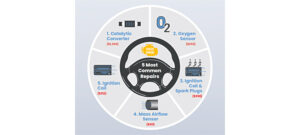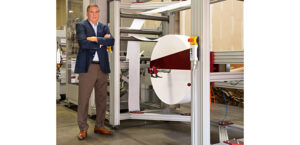However, supplier leaders have also made great gains in workforce culture, by anchoring the desire for more flexibility
Southfield, Mich.—According to the Q4 2022 OESA Automotive Supplier Barometer Index (SBI) — a gauge to measure the sentiments of North American automotive supplier executives — a range of factors weigh on the 12-month outlook for supplier executives, including: continued disruption to automotive supply chains from input shortages, risks of shutdowns at OEM production facilities and expected weakness in the U.S. economy. The fourth quarter barometer showed continued pessimism with an SBI reading of 36, or 14 points below a neutral level of 50, highlighting growing concerns with sequentially negative results due to mounting labor and supply chain pressures along with concerns over high inflation.
The Q4 2022 OESA Supplier Barometer focused on talent and HR. The results indicate:
- Production shutdowns stemming from supply chain shortages and issues continue to be the top threat to the industry over the next 12-months yet have eased from the prior quarter along with the inability to fulfill customer volumes. Weakness in the U.S. economy and labor availability continue to be of great concern and show little to no improvement sequentially.
- Gaps between responsibilities and skills remained consistent with last year while the gap between current and expected company culture closed significantly. Firms are focusing on increasing internal skill development and changing hiring practices to offset skills gaps, while continuing a culture of flexibility.
- Scarce labor availability and competition from other sectors kept hourly employee turnover at extremely high levels. Suppliers are increasing wages and relying on contract employees to offset the shortage of production workers. However, wage increases, signing and retention bonuses, and mentoring initiatives were the most successful programs to offset shortages.
- Wage pressures remain as the supply base is budgeting for 4.3% and 3.6% increases, on average, for hourly and salary employee wages in 2023, respectively. Additionally, suppliers expect cost pressure across nearly all other benefit offerings.
“Executive sentiment reflects further concerns in the fourth quarter, due to mounting labor and supply chain pressures while high inflation weighs down the business outlook. Despite these pressures, suppliers deserve ample credit for supporting a higher North America vehicle build rate this year of nearly 14.5 million units (+1.5 million unit from 2021). All this while battling high employee turnover amid a severe talent shortage, most acute for hourly workers and skilled trades,” said Mike Jackson, executive director, strategy and research, OESA. “Supplier leaders have also made great gains in workforce culture, by anchoring the desire for more flexibility with a sense of belonging, as leaders deploy creative ways to bolster retention via mentoring, skills assessments and career rotation programs to empower employees and accelerate supplier success,” Jackson said.




Comments are closed.